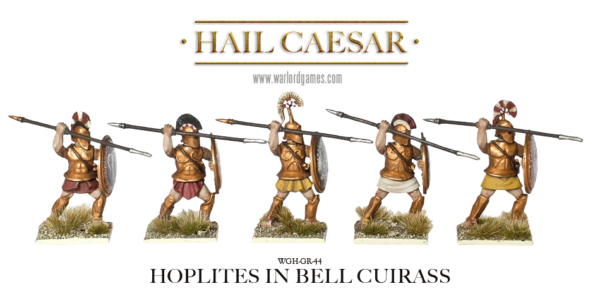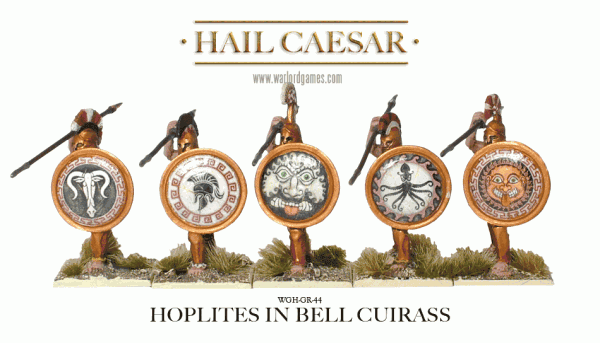Wearing bronze cuirasses these hoplites will fit nicely with your plastic hoplites, providing even more variety as well as giving them a heavy infantry feel.
The hoplite was the mainstay of the Greek army during the Persian wars. Every man was expected to provide his own equipment so he could fight in the phalanx. This at the very least would have been a helmet, greaves, spear and shield. Arms and armour would have been bought or passed down through the family, resulting in a mixture of old and new equipment spread throughout the phalanx.
Whereas the linen cuirass is thought to have originated in the east, the bronze ‘Bell’ cuirass is a purely Greek invention. The older styles dating from the 8th century had decoration mimicking the outlines of the human anatomy. By the end of the 6th century the human torso was rendered quite accurately and must have take a very skilled metal worker to create. Older styles were still in use, as can be attested by a bronze bell cuirass, decorated in a older style dating from 525 BC.
The shield was arguably the most important piece of the hoplite’s panoply, without it protecting its bearer and the man to his left the phalanx would be broken. It is a popular misconception that the shield was made from bronze, in reality the facing was only covered in a sheet of bronze around half a millimetre thick, this was probably for show rather than protection.
The main arm of the hoplite was the the long thrusting spear, if this broke in the heat of battle the hoplite carried a Kopis or other short slashing blade.
Each pack includes separate heads and separate arms and can be added to your army here.


